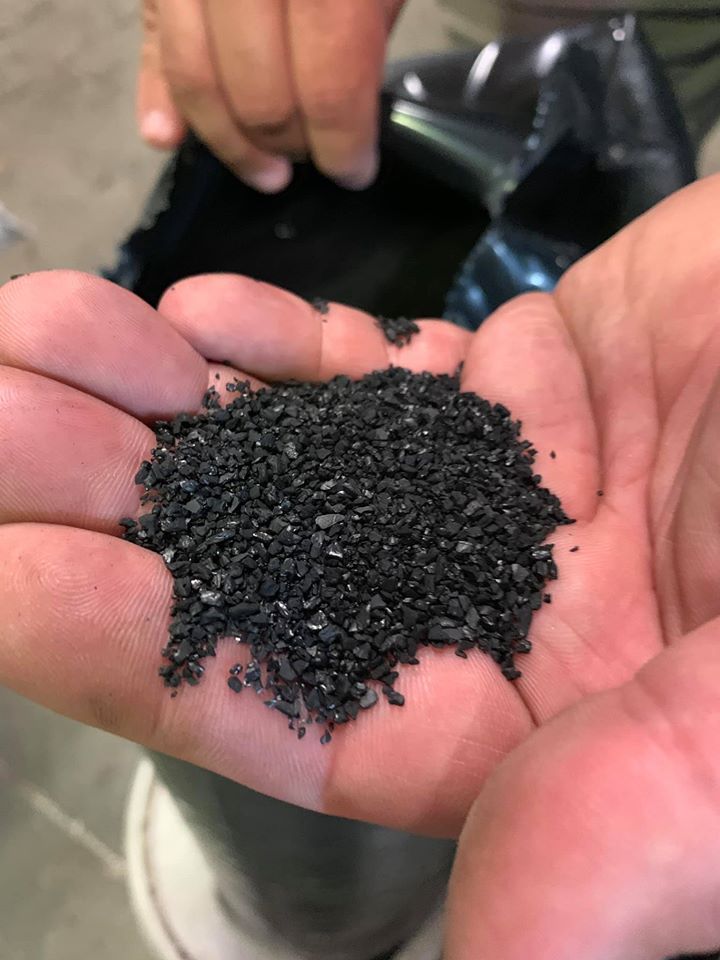
News reports about PFC’s being discovered in both public and private wells at several locations well above the levels in the EPA’s Provisional Health Advisory have raised the level of concern among many home owners about the potential for such contaminants to be in their own wells. Recent reports of similar findings in surface waters and streams have heightened such concerns.
PFC’s, also referred to as perfluoroalkyl substances (PFAS), include a number of perfluoroalkyl acids (PFAA). Two of these, perfluorooctanic acid (PFOA) and perfluoroctane sulfate (PFOS) occupy most of the media attention, and are the specific subject of the Health Advisory. PFC’s have the useful property of repelling water and oils, making them very appealing to various industries. They are found in such diverse products as stain-resistant carpet and fabrics, waterproofing for fabrics and leather, some non-stick surfaces, and fire-fighting foam.

Both PFOA and PFOS have been shown to be widely distributed in the environment. They are persistent and do not degrade easily; they are also water soluble and are commonly detected in drinking water sources. The pathways for PFC’s to reach groundwater sources are many, and the understanding of the subject is very much an emerging science. They are associated with numerous health effects in humans, and developmental effects in infants.
How do I know if these contaminants are in my water?
PFC’s are not detectable through ordinary senses: taste, odor, color. They must be identified through testing by a qualified laboratory. The relevant concentrations are extremely small, in parts per trillion; that’s about one nano-gram per liter of water (ng/l). The Environmental Protection Agency (EPA) has developed Provisional Health Advisories for PFOA and PFOS at 70 ppt total, and are currently developing Lifetime (chronic exposure) Advisories.

So, I ran the test and I have some in my water – what do I do (if anything)?
We subscribe generally to the idea that guidelines developed by the EPA, and by extension State agencies, represent the best resource available to the public for evaluating the health risks associated with various contaminants. We do not, as a practice, make recommendations to treat contaminants that do not exceed EPA guidelines.
That said, we recognize that the maximum contaminant levels (MCL’s) for most health related contaminants represent a risk/cost/benefit assessment, and not a point below which no threat exists. Our belief is that each home owner should consider all available sources of information and weigh the reliability of each one. Essentially, it is the homeowner’s decision as to what level of contaminant is acceptable to them, and we understand that some may want to treat even for very low levels considered under the EPA limit. We are fully prepared to provide solutions to treat the issue.
How can PFC’s be removed from my water?
The treatment industry has been exploring a wide array of treatment alternatives. The consensus (and our own view as well) is that for residential treatment applications, there are two approaches appropriate for most scenarios:
- Granular Activated Carbon (GAC) is the go-to choice for both whole-house and point-of-use (drinking and cooking only) solutions. We follow the EPA/DES recommendation to use a pair of treatment vessels in series with a testing port between them to detect contaminant breakthrough while the second vessel is still effective. Size and specific choice of GAC type are application specific.
- Reverse Osmosis Systems, which also include activated carbon elements in the treatment path, can be an option where there can be an additional collateral benefit, such as salt reduction, nitrate, or arsenic remediation.



Any decision as to what to do about PFC’s in your water source has to start with the question “are they in there?” The tests involved are not inexpensive, so start by investigating whether your location is within a known contamination source or threatened by one. State resources, e.g. New Hampshire Department of Environmental Services (DES), may have that information; in some cases they may provide the testing if you are part of an area they are monitoring.
If, however, you “just have to know” then by all means have the testing done. One cost effective source we have located is Absolute Resources in Portsmouth, NH.
If you uncover a situation that merits treatment, for reasons satisfactory to you, call us at 603-868-3212! We will be happy to evaluate it, and recommend a cost effective solution suited to your needs.



